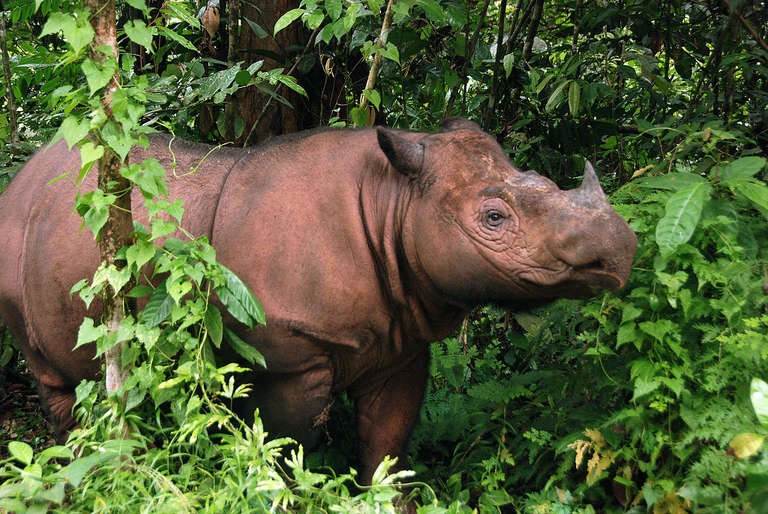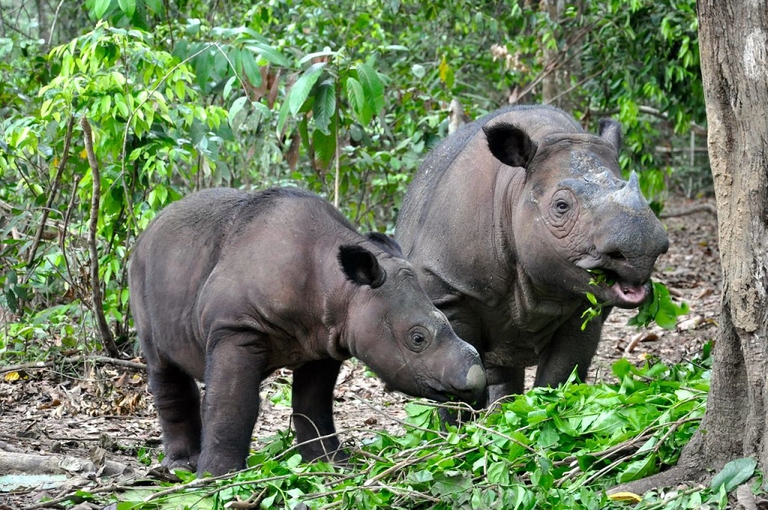
The Amazon became an alternative classroom during the pandemic. Now, the educational forest in Batraja, Bolivia, lives on to teach children and adults the value of nature.
In the Malaysian state of Sabah there are no Sumatran rhinos left in the wild, Environment Minister says.
The eastern Sumatran rhinoceros (Dicerorhinus sumatrensis harrissoni), also known as the Bornean rhino, is the world’s smallest and most elusive rhino. It’s a subspecies of the Sumatran rhino (Dicerorhinus sumatrensis) and is a shy and solitary creature that inhabits the thick Bornean forests.
Or better said, it used to inhabit. In fact, according to Environment Minister Masidi Manjun, there are no Sumatran rhinos left in the wild in the Malaysian state of Sabah. According to estimates, about 50 rhinos lived in Sabah in 2008, then only ten individuals were left five years later, and today they’re likely to be extinct.
The decline of this species is mainly linked to two factors: poaching for rhino horns (the horn doesn’t have any medical properties, contrary to many people’s beliefs), and habitat loss due to deforestation, mainly carried out to make place for oil palm plantations and human settlements.
After the death of Puntung, a 25-year-old female, there are only two Sumatran rhinos in Sabah, one female and one male – Iman and Tam, held in fenced, natural conditions at the Borneo Rhinoceros Sanctuary (BRS). But they seem to have problems reproducing. “There is still hope to save the species from extinction,” said John Payne, the Executive Director of the Borneo Rhino Alliance (BORA) and one of the world’s top experts on the species. “The only way to achieve that now is to use in vitro fertilisation”. Iman’s poor state of health is further complicating efforts to save the species, according to former Tourism, Culture and Environment Minister Masidi Manjun. “Considering that Iman is the only female rhino in captivity in the country , to me, that is even more difficult. We have to think twice before engaging in a treatment that has not been proven yet”. In order to save the genetic heritage of these ancient animals – the closest to the extinct woolly rhinoceros – Indonesian authorities announced they will send frozen samples of sperm to try with artificial insemination.
The priority now is to preserve Iman’s health, which has contracted uterus cancer. “We have only a pair left. The female rhino is sickly and presently put on 24-hour surveillance. It has lost about 50kg since July,” said Christina Liew, state Tourism, Culture and Environment Minister. In November, a female Sumatran rhino has been captured by Indonesian government officials and experts of the Sumatran Rhino Rescue, with the support of WWF Indonesia. The animal, called Pahu, has been moved to a centre in Kalimantan and could give an essential contribution to the captive breeding programme to save the species. “This translocation exercise is an essential first step in a wider effort to rescue the Sumatran rhino as they are now in a critical situation,” Wiratno, the Indonesian environment ministry’s head of conservation, said. “The government of Indonesia is fully committed not just to the captive breeding effort now underway but to safeguarding the natural habitat of the Sumatran rhino with the hope of eventually reintroducing a healthy population of animals into the wild”.
Sumatran rhinos originate from the Pleistocene, when they lived freely in the forests of India, Bangladesh, Myanmar, Laos, Thailand, Malaysia, Indonesia and China, until 1930, when people started hunting them for their horns, which were traded with Chinese people in exchange for porcelain objects.
Gradually, rhinos started hiding in thick forests, but humans deforested these areas allowing poachers to reach them. Another animal species is on the brink of extinction, due to humanity’s endless lust for blood.
There’s still hope to save these mammals that appeared on Earth 20 million years ago, and to allow them to continue roaming wild in our planet’s forests.
Siamo anche su WhatsApp. Segui il canale ufficiale LifeGate per restare aggiornata, aggiornato sulle ultime notizie e sulle nostre attività.
![]()
Quest'opera è distribuita con Licenza Creative Commons Attribuzione - Non commerciale - Non opere derivate 4.0 Internazionale.
The Amazon became an alternative classroom during the pandemic. Now, the educational forest in Batraja, Bolivia, lives on to teach children and adults the value of nature.
Our species took its first steps in a world covered in trees. Today, forests offer us sustenance, shelter, and clean the air that we breathe.
Bangladesh suffered widespread damage as a result of Cyclone Amphan. Yet the Sundarbans mangrove forest acted as a natural barrier protecting the country from further destruction, as it has done countless times before.
On top of a 2.4 million dollar compensation, the indigenous Ashaninka people will receive an official apology from the companies who deforested their lands in the 1980s.
The tapir was reintroduced into Brazil’s Atlantic Forest, the country’s most at-risk ecosystem. The species can play a key role in the forest’s recovery.
Forests are home to 80 per cent of the world’s terrestrial biodiversity. This year’s International Day of Forests highlights the urgent changes needed to save them.
After a legal battle that lasted two years, Indonesia’s Supreme Court has revoked the permit to mine for coal in the forests of South Kalimantan in Borneo.
The list of human and animal victims of the Australia wildfires keeps growing – one species might already have gone extinct – as the smoke even reaches South America.
Areas where the FARC guerrilla used to hold power in Colombia have faced record deforestation. Farmers cut down trees, burn land and plant grass for cows. Because, “what else can we do for a living here in the Colombian Amazon”? An intimate report from the heart of the felled forest in Caquetá.










